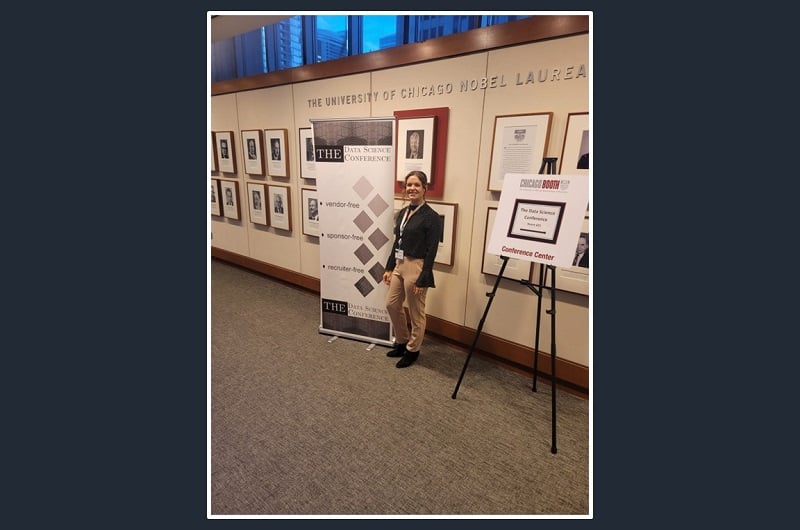Data Science Conference
Chicago, IL

On October 27th and 28th, Destiny Vorbeck attended the Data Science Conference in Chicago, Illinois. It is the first and only sponsor-free, vendor-free, and recruiter-free data science conference. Its core philosophy is a ‘no sales’ philosophy, where attendees are seen as fellow data scientists, not sales prospects. All presentations center around various data science concepts and experiences, with no allowance for promotions.
The 2-day conference was filled with presentations from leaders in the healthcare, retail, financial markets, government, and social media industries. They ranged from concepts regarding up-and-coming technical advancements and theories in the industry to practical steps to take when growing an analytics division and coexisting within complex technical environments.
Key speakers were:
- Robert L. Grossman, Analytic Strategy Partners & Center for Translational Data Science – University of Chicago: How Much Have the Recent Advances in Data Science & AI Changed Drug Discovery?
- Jamie Antonelli, Senior Manager of Data Science – Blue Cross Blue Shield of Illinois: Top Things They Don’t Teach You in a Data Science Degree
- Bhargava Reddy, Director, Advanced Insights at The Janssen Pharmaceutical Companies of Johnson & Johnson: Artificial Intelligence to Optimize Risk Management Activities within Clinical Operations
- Shubhanshu Mishra, Senior Machine Learning Researcher at Twitter: Social Media Information Extraction: multi-task, multi-lingual, & multi-contextual
- Babar Bhatti, Principal AI and Data Customer Success Leader at IBM: Practical Ways to Build Fair, Unbiased, and Trustworthy AI
Some key takeaways and knowledge gained from the conference includes:
- FLAML – Fast and Lightweight Automated Machine Learning – is a new Python package that was created by Microsoft to assist with speedier analyses that can handle bulk computations.
- Through ML & AI inclusion in Clinical Operations, we can assist with clinical data management, risk-based monitoring, feasibility & site selection, resourcing & forecasting, and clinical operations.
- Using information extraction tasks, we can delineate corpus, document, and token level data within varying textual statements. We can use task classification to break the data further into abusive, sentiment, and uncertainty-based statements to gauge the feelings of a series of statements for marketing and social media purposes.
- The urgency to create sustainable and ethical AI should remain a primary focus for all data science endeavors. Most data that are used to create various models is not diverse and caters to specific groups of people, making the results untrustworthy for most of the global population. The inclusion of more diverse data is a necessity.
- When reviewing website usage, it is fair to assume that a positive conversion leads to a positive change in user experience, but it is incorrect to assume that a neutral conversion leads to no change in user experience. By using in-lab testing, usability metrics, and product surveys, you can accurately gauge usage and user experience appropriately and measure against all web-based changes.
- When building new data science divisions, it is important to distinguish the different responsibilities in the team against their technical counterparts. This includes distinguishing who selects projects, builds, tests, and places them into production, and who maintains each model. Having weekly working sessions and office hours can assist with cohesion and maintain a sense of comradery across both departments.
To learn about Trexin’s Analytics Capability, please click here:


